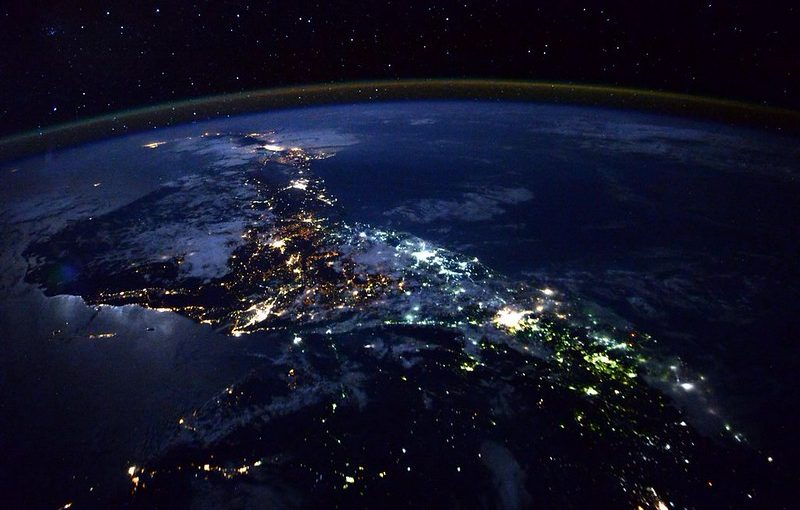by David Parmer / Tokyo
Here are a few “predictions” from RG-21 for 2021. None of them are really new, but rather the ways that existing situations might develop in the New Year.
China-VS-US: We took a look at this topic before here at RG-21, and our conclusions have not changed much. The new Biden administration will not fundamentally change its relationship with the People’s Republic of China. Certainly the bellicose tone favored by President Trump and Secretary of State Mike Pompeo will be toned down. Diplomacy will be back in fashion and this includes relations with the PRC. The constant attacks on the CPC (Communist Party of China) will cease from the US government, but not from right-wing elements within the US.
As former Secretary of Defense James Mattis saw it, China is a “strategic competitor” but not an enemy. This may very well be the approach that the Biden administration takes. Also, the Trump administration has left the Biden people with several cards to play vis-a-vis China. While some sanctions may be lifted as a “good will” gesture, the others will be bargaining chips which the US will happily remove in return for concessions from the PRC.
As for the South China Sea issue, neither China nor the US will budge much if at all. As for the Indo-Pacific, the US will continue to do what it has been doing to form a coalition around the area to maintain a “free and open Indo-Pacific.” From the Chinese side this may very well be seen as an effort to contain or encircle China.
The US will continue to evaluate Huawei’s role in building and re-building infrastructure worldwide. The case of Meng Wanzhou might be re-evaluated and dropped or settled out of court as a “good will” gesture to the PRC.
President Biden will get US allies on board with whatever China policy the US decides to adopt. This may be easier than might be imagined since, for now, China and Europe are not on the best of terms.
Finally, with better US-China dialogue, consular facilities that were closed on a tit-for-tat basis may be quickly re-opened.
Iran-VS-US: Relations between the US and the Islamic Republic are at such a low point that almost anything done in a positive manner would be seen as significant. After China, Iran is next on the list threats to the US as seen by the Trump administration.
To this end President Trump pulled the US out of the JCPOA or “Iran Deal” despite Iran’s independently verified full compliance with the terms of the agreement. As we have written previously, the Europeans (together with China and Russia) have kept the agreement on “life support” after the US withdrawal. The US and Israel have kept Iran in their sights, and have taken provocative actions that only strengthen the radical elements within Iran, and then use the results of those provocations to show how dangerous Iran is.
Here again, the Trump administration has left the US with some cards to play. Sanctions could be lifted in exchange for that which the US and its allies want. For example, a whole host of sanctions could be lifted for some movement on Iran’s limiting its missile program, one that causes much more threat to its neighborhood than a nuclear capability.
It was the US and Israel that wanted Iran to re-negotiate the JCPOA to include this program that caused the US to withdraw from the JCPOA. The strategy was that crippling sanctions would drive Iran back to the table to negotiate over its missile program. This did not happen. The Iranians, just like the Cubans bore the brunt of US sanctions and did not fold.
The Biden administration could begin immediately to re-weave the JCPOA. First by re-joining, and then when Iran is found in compliance, to release much-needed funds to the government of Iran.
The original strategy of the JCPOA was to strengthen the moderate elements in the Iran power structure, and it is likely that this strategy will again be used.
Taiwan-VS-China-VS-US: The bottom line is this–the US Taiwan policy will not fundamentally change, but the tone will. Support for Taiwan (as is) is rock solid in the US congress. Weapons sales will continue. What will happen first is the rhetoric regarding China will be toned-down.
Also, the drawing of Taiwan closer to US will probably stop. Despite the Taiwan Relations Act, high-level visits by US officials will be seen for what they are: provocative acts which could potentially de-stabilize a precarious situation. Acts that could be seen as re-recognizing Taiwan as “China” will be toned-down or eliminated. But the US will not budge on Taiwan or on the “freedom of navigation” within the Taiwan Strait.
In a sense, this takes the US out of the equation in the question of China-vs-Taiwan. In another sense, both parties are back to “square one.” And what is “square one?” China claims Taiwan as its territory and has promised to return the island to the PRC even using force if necessary. Taiwan sees itself as a de-facto independent country, and clings to the Republic of China name not as an anachronism but as a reality. Again and again the people of the island have reported that they see themselves as Taiwanese and not Chinese.
President Tsai Ing-wen’s Democratic Progressive Party is called an “independence” party, but it knows that if it declares “independence” it will cross a redline that will probably lead to the PRC invading.
China may be thinking (and hoping) that if the DPP does not deliver to its constituents, then the pro-Beijing Kuomintang opposition party may take power and relations would again improve significantly.
The situation for now: stalemate. But from the PRC’s point of view, the clock is ticking. Tick-tock, tick-tock.
US-VS-Europe: Old friends meet again. Traditional allies close ranks. Relations between the US and Europe will take a monumental leap forward once Joe Biden raises his hand and takes the oath of office of the President of the United States. Trump’s distain for diplomacy and for long-standing relationships that do not benefit the US in his way of calculating will no longer be policy.
The Biden administration will again re-assert US world leadership and call on the Europeans to join. With its strong traditional allies the US will have a joint face regarding both China and Russia.
US-Turkey-NATO: President Recep Tayyip Erdogan of Turkey is going his own way and is far along on making Turkey a viable regional power. There have been comments that he is creating a new Ottoman Empire with himself at the center. Turkey is the only Muslim member of NATO, and the US has for years had a base at Incirlik on Turkish soil. And yet, Turkey despite its NATO membership went ahead and bought the powerful and capable Russian Triumph S-400 missile system. In retaliation, the US removed Turkey from a lucrative and advanced program in fabricating the cutting-edge F35 fighter.
Erdogan also has brought force to bear on the Kurdish fighters in Syria whom it counts as terrorists. These same Kurds are seen as staunch US allies, or at least they were before the Trump administration pulled US advisors out, thereby signaling Erdogan that is OK to do what he wishes with the Kurds.
It is likely that the US will mend fences with the Kurds as well as soon as Donald Trump is gone. But the US will now have to face new challenges in the region. Both Iran and Turkey will be mid-level players who will be calling the shots in their neighborhood. It will be up to the Biden administration to formulate a strategy to deal with these two emerging and powerful regional powers.
Korea-VS-The World: There are no signs that the Kim dynasty will go away any time soon. Kim Jong-un will continue to rule and will continue to hone his nuclear powered military. He will probably try to upgrade his submarine fleet (if anyone will sell him the boats) and will continue to strengthen his special forces as well.
Kim’s strategy for the South in the event of war would be asymmetrical warfare to start with including the use of special forces to disrupt communications and transport in the South and then use his massive conventional forces to invade following a withering rain of artillery fire on Seoul and a missile attack on the largest US base in the country, Camp Humphreys, which is just 97km (60 miles) from the Demilitarized Zone (DMZ).
Donald Trump’s attempt to get concessions from Kim failed. His meetings resulted in nothing taking place except the optics of a meeting. The Biden administration will have to deal with the Korea stalemate as well. Kim will probably use his nuclear arsenal to try to intimidate the US and Japan, and extract some kind of concessions from the South.
Perhaps the only negative to be found in the departure of Donald Trump from the office of US president will be the fact that Kim could never be sure of Trump’s mental state, and he could never be sure that Trump would not “press the button” on the DPRK.
With a more measured and professional Biden in office, it is likely that Kim, without the fear of immediate nuclear reprisal from Trump, will again begin to stir things up on the Korean peninsula.
There are a few more areas of interest that could heat up in 2021. Next time we will take a look at a few including Russia, Syria, Central Africa, and the Nordic countries.
Photo: Marshall Space Flight Center via flickr
 日本語
日本語 English
English 中国語
中国語
